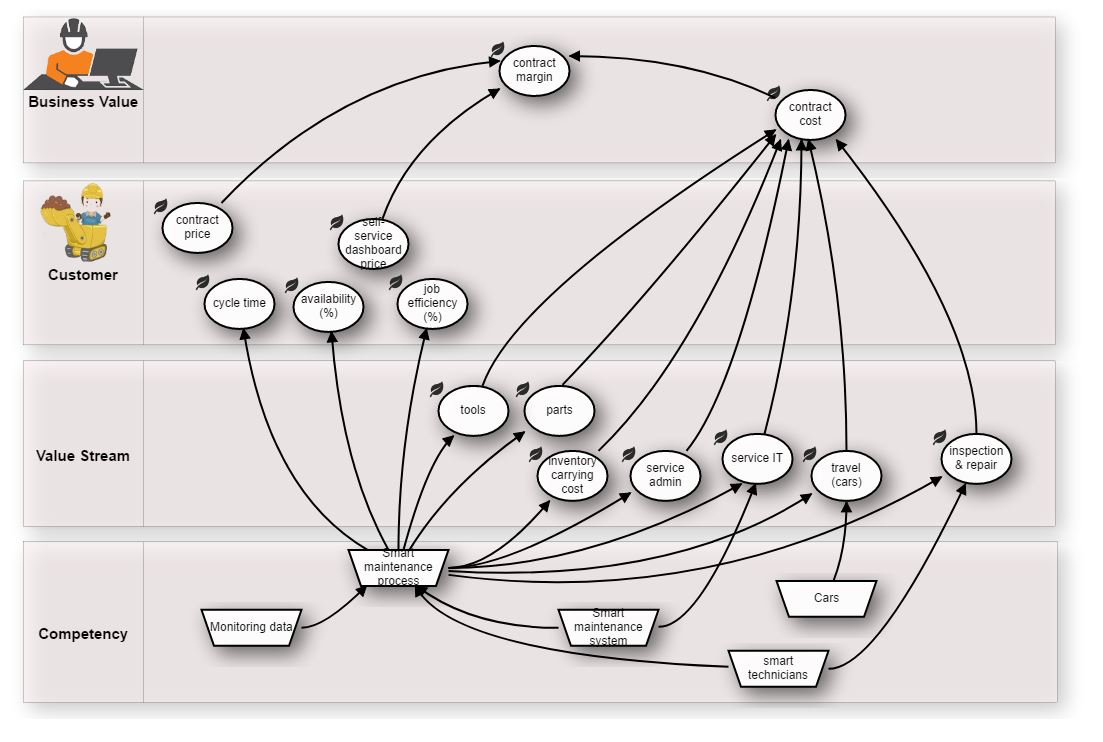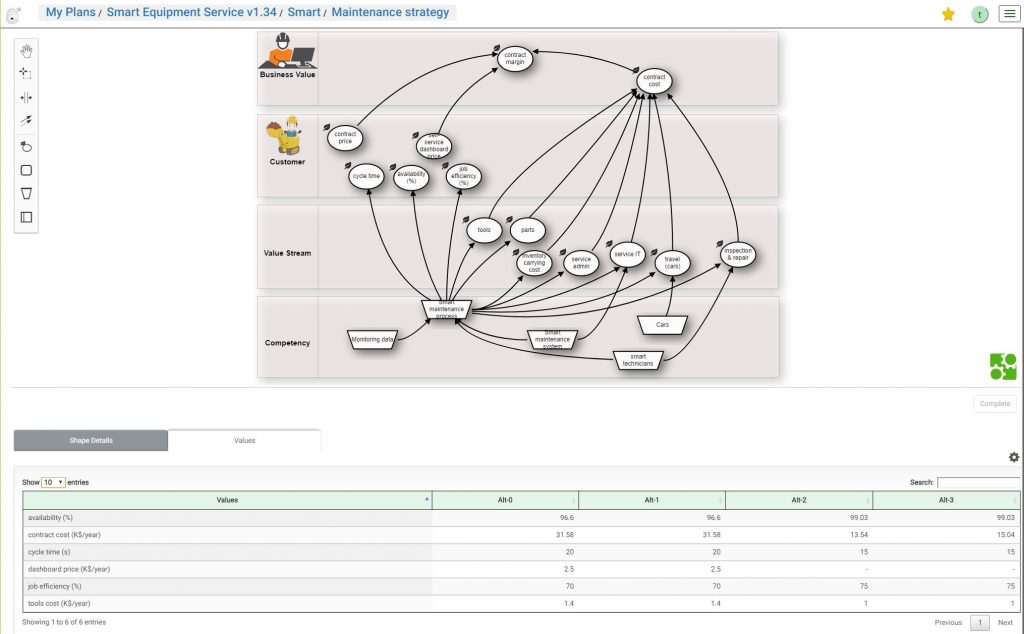Background
A strategy map is a diagram that is used to document the primary strategic goals being pursued by an organization or management team. It is an element of the documentation associated with the Balanced Scorecard, and in particular is characteristic of the second generation of Balanced Scorecard designs that first appeared during the mid-1990s. The first diagrams of this type appeared in the early 1990s, and the idea of using this type of diagram to help document Balanced Scorecard was discussed in a paper by Drs. Robert S. Kaplan and David P. Norton in 1996.
The strategy map idea featured in several books and articles during the late 1990s by Robert S. Kaplan and David P. Norton. In their book, The Strategy Focused Organization, they explicitly refer to strategy maps and includes a chapter on how to build them. They said that “the relationship between the drivers and the desired outcomes constitute the hypotheses that define the strategy”. Their book, Strategy Maps, goes into further detail about how to describe and visualise the strategy using strategy maps.
The Kaplan and Norton approach to strategy maps has:
- An underlying framework of horizontal perspectives arranged in a cause and effect relationship, typically Financial, Customer, Process and Learning & Growth, or, as in Strategyplanner: Business Value, Customer, Value Stream and Competency.
- Objectives within those perspectives. Each objective as text appearing within a shape (usually an oval or rectangle). Relatively few objectives (usually fewer than 20)
- Vertical sets of linked objectives that span the perspectives. These are called strategic themes.
- Clear cause-and-effect relationships between these objectives, across the perspectives. The strategic themes represent hypotheses about how the strategy will bring about change to the outcomes of the organisation.
The purpose of the strategy map in Balanced Scorecard design, and its emergence as a design aid, is discussed in some detail in a research paper on the evolution of Balanced Scorecard designs during the 1990s by Lawrie & Cobbold.
Origin of strategy maps
The Balanced Scorecard is a framework that is used to help in the design and implementation of strategic performance management tools within organizations.
One of the big challenges faced in the design of Balanced Scorecard-based performance management systems is deciding what activities and outcomes to monitor. By providing a simple visual representation of the strategic objectives to be focused on, along with additional visual cues in the form of the perspectives and causal arrows, the strategy map has been found useful in enabling discussion within a management team about what objectives to choose, and subsequently to support discussion of the actual performance achieved.
Perspectives
Very early Balanced Scorecard articles by Robert S. Kaplan and David P.Norton proposed a simple design method for choosing the content of the Balanced Scorecard based on answers to four generic questions about the strategy to be pursued by the organization. These four questions, one about finances, one about marketing, one about processes, and one about organizational development evolved quickly into a standard set of “perspectives” (“Financial”, “Customer”, “Internal Business Processes”, “Learning & Growth”).
Design of a Balanced Scorecard became a process of selecting a small number of objectives in each perspective, and then choosing measures and targets to inform on progress against this objective. But very quickly it was realized that the perspective headings chosen only worked for specific organisations (small to medium-sized firms in North America – the target market of the Harvard Business Review), and during the mid to late 1990s papers began to be published arguing that other sets of headings would make more sense for specific organization types, and that some organisations would benefit from using more or less than four headings.
Despite these concerns, the ‘standard’ set of perspectives remains the most common, and traditionally is arrayed on the strategy map in the sequence (from bottom to top) “Learning & Growth”, “Internal Business Processes”, “Customer”, “Financial” with causal arrows tending to flow “up” the page.
The ‘standard’ set of perspectives is arranged in the sequence (bottom to top) to allow a sequential linkage from the investment perspective of Learning and Growth to the outcome perspectives of Customer and Financial. A well-designed strategy map will allow the author to ‘tell a story’ from the bottom to the top along the lines of “If we invest in (training, education etc) it will allow us to improve our Internal Processes which will impact our Customers (in a positive way) and improve our Financial results. In other words, Learning and Growth drive Internal Process change which impacts Customer Satisfaction which in turn improves Profitability. In the early part of the century, it was recognized that the perspective Learning and Growth was lacking significant investment areas, that of infrastructure and IT. Today, the lower-most perspective has been renamed to Organisational Capacity.
Strategy map designer
A Strategy Map is used to specify key Values and to visualize cause-effect relationships between these Values and factors that influence them.
Different Shapes can be used for Values and the factors that influence them. Shapes can optionally be grouped by perspectives.
Elements in a Strategy Map can be mapped to elements in structured Business Models and their related Values, Activities and Competencies, as well as to Plan Values. Based on such mapping, elements in structured Business Models, as well as Plan Values, can be created and existing ones can be selected for visualization.
Note that sometimes, due to the nature of Discovery, Shapes in a Strategy Map denote bigger or more abstract concepts than can be mapped to specific elements in structured Business Models. In such cases the user may choose to not map these Shapes.
Here a screenshot of a Strategy Map

The Strategy Map designer provides also insight in the Value impact of your plan. All Values that are related to the Strategy can be visualized in the Values tab.


